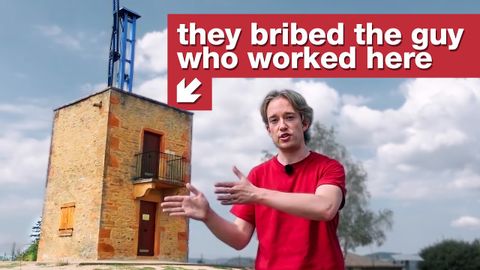史上第一起電信詐騙案是如何運作的? (How The First Ever Telecoms Scam Worked)
 沒有此條件下的單字
沒有此條件下的單字US /dɪˈlɪbərɪtlɪ/
・
UK /dɪˈlɪbərətli/
US /spɛkˈtækjəlɚ/
・
UK /spekˈtækjələ(r)/
US /ædˈvæntɪdʒ/
・
UK /əd'vɑ:ntɪdʒ/
- n. (c./u.)優勢;優點;利益
- v.t.利用;佔便宜
- n. (c./u.)弄亂,弄髒;毀壞;;困境;食物;食堂
- v.t.混日子

